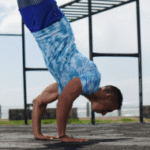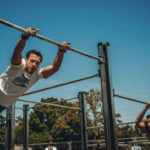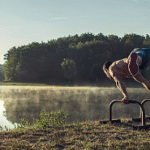Boost Recovery Like Houston’s Elite Athletes: A Guide to Contrast Therapy
**Please be advised:** While I can process and respond to your request for information relevant to the USA and Houston, my internal system settings indicate your current location context is Belo Horizonte, Brazil (as of April 15, 2025, 10:27:13 AM -03). The information provided below is based on general knowledge and search results pertinent to the USA and Houston athletic scenes.
Okay, let’s dive into how you can **”Boost Recovery Like Houston’s Elite Athletes”** using contrast therapy. This guide provides detailed information for athletes and fitness enthusiasts in the USA looking to leverage this popular recovery technique.
**Introduction: The Pro Recovery Secret Weapon?**
Ever wonder how elite athletes, like those playing professionally in Houston (think Texans, Rockets, Astros), bounce back from grueling practices, intense games, and demanding travel schedules? While genetics, nutrition, and sleep are foundational, advanced recovery strategies play a crucial role. One technique frequently found in professional training rooms and high-level athletic facilities is **Contrast Water Therapy (CWT)**, or contrast therapy – the practice of alternating between hot and cold water immersion. This guide details why top athletes use it and how you can incorporate it into your routine for enhanced recovery.
**Why Elite Athletes Turn to Contrast Therapy:**
For athletes pushing their bodies to the limit, minimizing downtime and optimizing performance is paramount. Contrast therapy is utilized primarily for:
- **Accelerated Muscle Recovery:** The main goal is to speed up the body’s natural repair processes after intense exertion.
- **Managing DOMS (Delayed Onset Muscle Soreness):** Reducing the severity and duration of the muscle soreness that typically peaks 24-72 hours after strenuous activity. This allows for more consistent training.
- **Controlling Inflammation:** Helping to manage exercise-induced inflammation and swelling, potentially aiding recovery from minor strains or impacts (used *after* the very acute injury phase).
- **Reducing Perceived Fatigue:** Helping athletes *feel* less tired and more ready for their next session or competition.
- **Potential Performance Benefits:** By aiding recovery, it may indirectly support maintaining a higher level of performance over a training block or season.
**The Physiological Rationale (Why it Might Work):**
* **Vascular Effects:** The rapid switch between hot (vasodilation) and cold (vasoconstriction) is thought to create a “pumping” action, potentially improving blood flow, flushing metabolic byproducts, and reducing edema (swelling).
* **Pain Modulation:** Both heat and cold can affect nerve endings and pain signaling pathways (Gate Control Theory), reducing the perception of soreness.
* **Inflammation Regulation:** Cold constricts vessels, limiting inflammatory influx, while the alternating flow might help clear inflammatory mediators.
**Typical Contrast Therapy Protocols in Athletic Settings:**
While specific protocols can vary based on the sport, athlete, and facility, common practices include:
* **Temperatures:**
* **Hot Water:** Usually **100°F – 104°F (38°C – 40°C)**, sometimes slightly higher if tolerated.
* **Cold Water:** Usually **50°F – 59°F (10°C – 15°C)**.
* **Timing & Ratios:**
* Common ratios are **1:1** (e.g., 1 min hot / 1 min cold) or **3:1 / 4:1** (e.g., 3-4 min hot / 1 min cold).
* The total duration is often **15-20 minutes**.
* **Frequency & Timing:** Often performed **immediately after or within a few hours** of completing a demanding training session or competition.
* **Immersion:** **Lower body immersion** is very common for runners, cyclists, and field sport athletes. **Whole-body immersion** (up to the neck) may be used for overall fatigue.
* **Ending Temperature:** Protocols typically **end with cold immersion** to maximize vasoconstriction and potentially limit residual inflammation.
**How YOU Can Incorporate Contrast Therapy (Houston & USA Guide):**
You don’t need access to an NFL training room to try contrast therapy. Here’s how:
- **Find Facilities (USA/Houston):**
* **Dedicated Sports Recovery Centers:** Search for facilities in Houston specializing in athlete recovery – many now offer hot/cold plunge pools (e.g., search “sports recovery contrast therapy Houston”).
* **High-End Gyms/Athletic Clubs:** Some premium gyms in Houston provide both hot tubs and cold plunges in their recovery areas.
* **Wellness Centers/Spas:** Increasing numbers offer contrast therapy suites.
* **Contrast Showers (At Home):** The most accessible starting point. Alternate between hot and cold water in your regular shower (e.g., 2-3 minutes hot, 30-60 seconds cold, repeat 3-5 times). While less immersive, it still provides temperature contrast.
* **Home Plunge/Sauna Setups:** A growing market in the US offers various home cold plunge tubs and saunas for those willing to invest.
- **Starting Safely (Beginner Protocol):**
* **Ease In:** Don’t start with extreme temperatures or long durations. Try a contrast shower first.
* **Moderate Temps:** Aim for comfortable hot water (~100°F) and cool-to-cold water (~55-60°F).
* **Short Duration:** Start with a total session of 10-12 minutes, using shorter cycles (e.g., 2 min hot / 1 min cold).
* **Breath Control:** Focus on slow, controlled exhales, especially when entering the cold water, to manage the initial shock.
- **Timing Considerations:**
* Generally best performed **after** your workout or activity.
* *Note on Hypertrophy:* Some research suggests immediate *cold* water immersion after *strength training* might slightly blunt muscle growth signals. The evidence for *contrast* therapy is less clear, but if maximizing muscle size is your absolute primary goal, some experts suggest waiting an hour or more post-strength workout before doing intense cold or contrast therapy. For general recovery and soreness, post-workout is standard.
- **Integration is Key:**
* Contrast therapy is **one tool** in the recovery toolbox. Elite athletes also prioritize **sleep, nutrition, hydration, active recovery (light movement), and sometimes massage or compression.** Don’t rely solely on CWT.
**Safety Precautions for Active Individuals:**
* **Listen Aggressively to Your Body:** Athletes often push limits, but don’t ignore signs of dizziness, excessive shivering, numbness, or pain during CWT. Exit immediately if needed.
* **Hydrate Well:** Especially important after intense training combined with sauna/hot tub use which causes sweating.
* **Medical Check:** Consult a doctor or sports medicine professional if you have any underlying health conditions (especially cardiovascular), are recovering from a significant injury, or have concerns.
* **Acute Injuries:** Avoid contrast therapy (especially heat) on **new, acute injuries** (first 24-72 hours) showing significant swelling or bleeding potential. Follow RICE (Rest, Ice, Compression, Elevation) principles initially unless advised otherwise by a professional.
**Disclaimer: “Like Elite Athletes” Requires Context**
While you can use the *principles* and *methods* employed by elite athletes, remember they have access to:
* Personalized protocols based on their specific sport, training load, and physiological data.
* Expert supervision from athletic trainers and medical staff.
* Top-tier, precisely controlled equipment.
* Their exact recovery routines are often proprietary.
Emulate the *concept* of prioritizing recovery and using evidence-informed tools like CWT, but adapt it responsibly to your own body, budget, and accessible resources.
**Conclusion:**
Contrast Water Therapy is a widely utilized recovery strategy in elite athletics, potentially including among Houston’s top competitors, valued for its role in managing muscle soreness, inflammation, and perceived fatigue. By understanding the common protocols, leveraging accessible facilities or home methods (like contrast showers) in the USA, and prioritizing safety, athletes and fitness enthusiasts at all levels can incorporate this “hot and cold” technique into their routines. While it may not be a magic bullet, when used correctly as part of a holistic recovery plan including sleep, nutrition, and rest, contrast therapy can be a valuable tool to help you recover faster and feel more prepared for your next challenge – just like the pros aim to do.

Boost Recovery Like Houston’s Elite Athletes: A Guide to Contrast Therapy
Route
Calisthenics Gym Houston Functional Bodyweight Training
Secondary phone: (346) 483-3195
Email: info@calisthenicsclubhouston.com
URL: https://calisthenicsclubhouston.com/
Monday 6:00 AM - 7:00 PM Tuesday 6:00 AM - 7:00 PM Open now Wednesday 6:00 AM - 7:00 PM Thursday 6:00 AM - 7:00 PM Friday 12:00 PM - 6:30 PM Saturday 9:45 AM - 12:00 PM Sunday 3:00 PM - 5:00 PM





